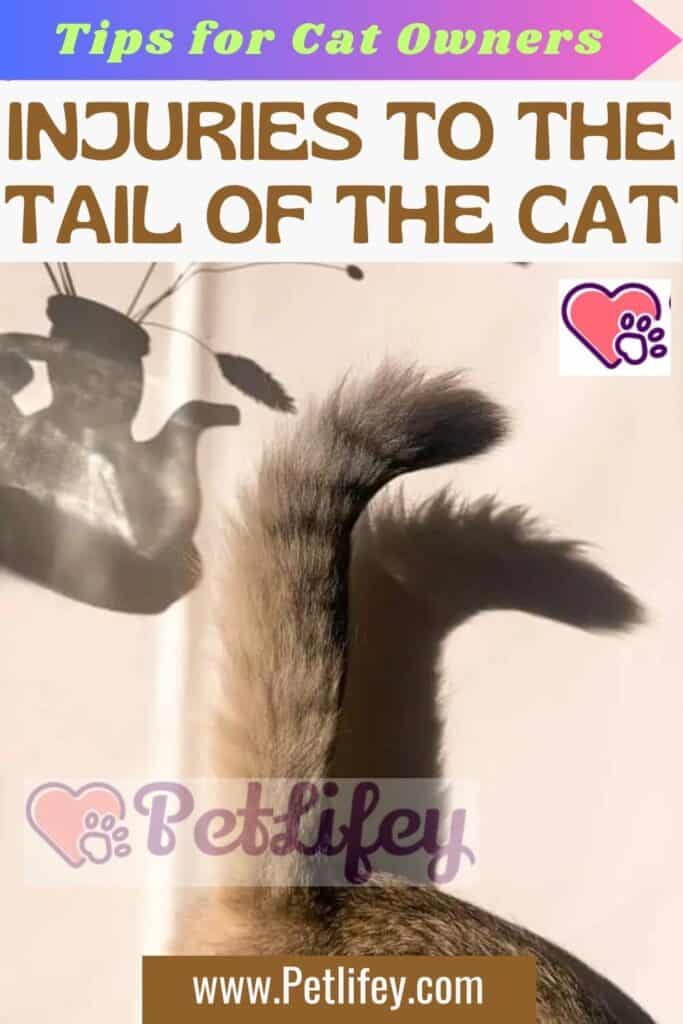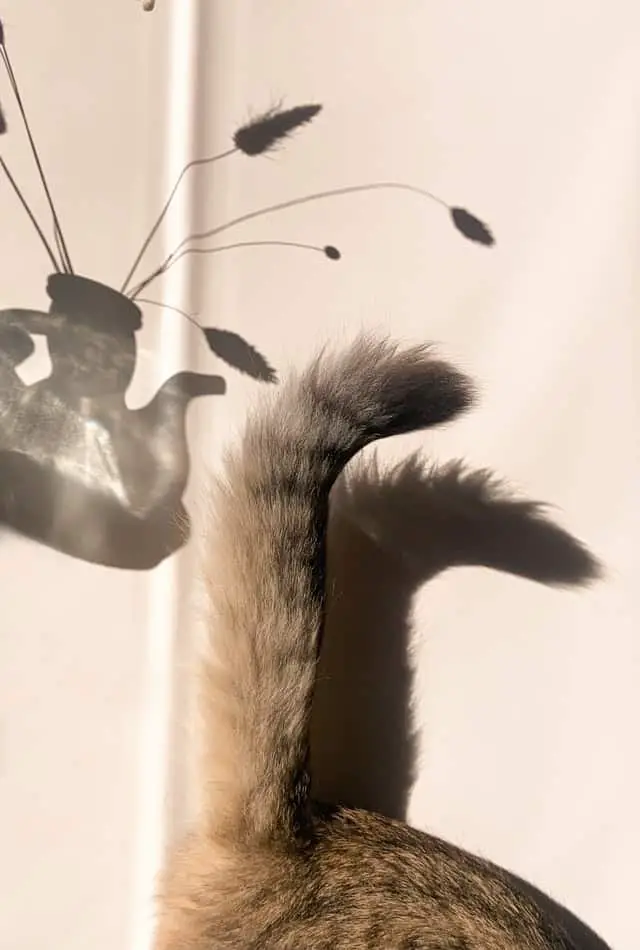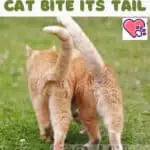
Cat tail injury: soft and lashing at the same time, elegant but also useful. Unfortunately subject to this problem.
The tail of the cat, an essential element of beauty in the feline, the tail, in addition to being very ornamental for its figure and helping it to maintain balance during jumps, is also an instrument of expression for the animal.
Injury to the cat’s tail

The tail of cats therefore has several uses. It acts as a rudder when it comes to doing big jumps and pirouettes. It can also be used as a toy because cats use their tails to entertain their kittens, thus stimulating their fine motor skills, curiosity and hunting instincts.
Another usefulness that the cat’s tail has is to show the mood through it. But it is often prone to problems such as injuries. Below we will list the various situations in which cat tail injuries can occur.
Skin infection
The most obvious and common symptoms of cat skin inflammation are: scratching and rubbing on itchy areas, as well as inflamed and irritated skin, in this case of the tail. The cat may show one or more signs of discomfort, which may involve a fixed spot on the body or a more general problem.
The path to diagnosis, which involves identifying the root cause of a skin disease, should be done calmly, not quickly. First, the vet will get a full history of your cat’s lifestyle and symptoms and perform a thorough physical checkup during which he will look for obvious problems such as fleas.
The vet will also perform a fecal analysis to look for the presence of internal parasites. If nothing is found during these diagnoses, the search will continue with blood tests, looking for systemic causes of feline dermatitis, including autoimmune diseases.
If your cat’s blood test is normal, the next step is often to look for hypersensitivity reactions with food or environmental causes. For the treatment, once the cause has been identified, the tail will be kept clean, disinfecting it with betadine twice a day.
Use a fitted Elizabethan collar (E-collar), in most cases, to break the itch-lick-scratch cycle. And finally proceed with topical therapy treating only the injured area.
Abrasions
If it’s not too severe, the wound will likely heal in time with minimal treatment. It is essential at this stage to check for any symptoms of infection or if the cat holds or moves its tail differently.
This behavior can be useful for us to be able to identify the presence of a more serious injury and perhaps subject the animal to a veterinary visit. A simple abrasion, whether it’s a scratch or a small cut, can be observed around the house and with a little hydrogen peroxide care.
This is to be able to keep the tail clean and to be careful not to let it lick or scratch the area, it will soon be in excellent health and ready to return as active as before.
Bite wounds
There is nothing likely that the cat will find itself fighting, particularly if it has the opportunity to go outside and meet other cats.
The danger of bite wounds is around the corner and what you need to worry about is the extent of the injury, any infections and not to underestimate the possibility that if it is a bite from a stray cat, and therefore not subjected to vaccination against in anger.
Given the high risk of outdoor cat fights, it’s also important to keep your pet’s rabies vaccinations up to date. For this reason, if there are injuries to the cat’s tail, it is better to contact the veterinarian, who will ascertain the situation and make a diagnosis of the animal’s condition, evaluating obvious elements such as: redness, heat, pain and inflammation.
He will ensure that the wound does not become further infected and where it is particularly severe, he will put the animal to sleep through sedation and proceed with irrigating and cleansing the area.
At the end of this he will probably prescribe antibiotics and possibly painkillers for the treatment of the cat to be carried out with extreme care, keeping the cat’s tail clean and keeping it at home, trying to avoid going out into the garden, in order to prevent the fly larvae from growing. in wounds.
Fractures and dislocations
Due to its predatory habits, the cat is an animal that is constantly exposed to accidents and fractures. We can define a fracture as a partial or complete break in a bone or cartilage. The tail is an important part of the feline anatomy and is actually an extension of the spine.
This complex tail structure of bones, muscles, nerves and blood vessels can be easily injured. Some of the causes of a cat’s tail fracture are: closing in a door, being accidentally stepped on, bitten by another animal or hit by a car or other vehicle, the vertebrae that make up the tails can break.
The location of the fracture has a lot to do with the severity of the injury . If the fracture is at the tip of the tail, it usually heals well without any treatment. If the tail bones are pinched, part of the tail may need to be amputated. Injuries near the base of the tail often involve nerve damage and are more severe.
Below is a list of the different symptoms that can be seen if the tail is fractured. Some of the common indications that your cat may have suffered a tail injury include:
- a noticeable twist in the tail indicates that an injury has occurred;
- pain to touch in some areas of the tail;
- evidence of a bite or other injury;
- swelling in the tail area;
- the tail hangs and does not hold properly;
- problems with balance and / or difficulty walking or moving;
- faecal and / or urinary incontinence or inability to empty the bladder and / or bowel.
The diagnosis by the veterinarian will be supported by a set of diagnostic tests such as: in cases of more severe trauma, complete blood counts, urinalysis, x-rays and other standard diagnostic tests can be used. Depending on the severity, the treatment will proceed, which can be surgical or probably an amputation.
Car injuries
How many times during the very cold winter period, do we find some cat under the car to shelter? This happens because the animal feels the heat of the car engine, but this situation can lead to a great danger for the cat, as when the car is restarted, the tail can be trapped and pulled into the engine of the cat racing car.
This type of injury can cause tail paralysis and nerve damage. And it can sometimes damage the nerves that feed the bladder, so your cat may not be able to urinate.
First of all, rescue the animal immediately by taking it to the vet, who in these cases will proceed with the only solution that is always the amputation of the tail. Unfortunately, however, there are cases where fan belt injuries sometimes do irreparable damage and can even lead to death.
Self-mutilation of the tail
There are some cat tail injuries which in certain cases are self-mutilating and this can be caused by: flea allergies, food allergies and stress. But there is another condition that generates self-mutilation, that is a pathology called feline hyperesthesia syndrome “.
Feline hyperesthesia syndrome is a condition in which cats exhibit twitching or “rolling” of the skin and fur along the spine. “This can cause the cat extreme discomfort, which can cause it to“ severely self-traumatize the skin.
Simple skin irritation can be treated the same way as a skin infection, with antibiotics and occasionally steroids prescribed by a veterinarian. While the pathology is treated as convulsions in cats are treated and therefore with the use of painkillers.






